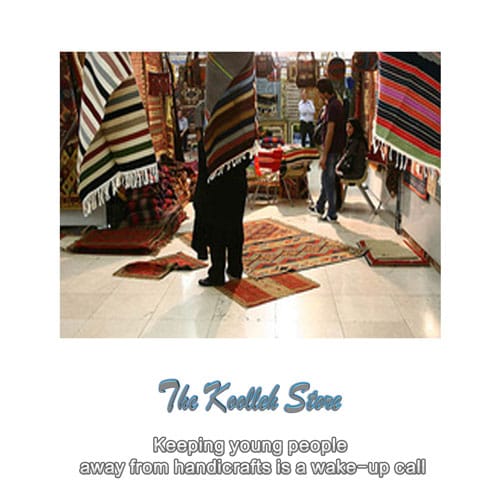Keeping young people away from handicrafts is a wake-up call

A senior handicrafts expert in South Khorasan said that distancing young people from indigenous handicrafts in the region is a warning sign for the loss of domestic and global markets.
The handicrafts and traditional arts of each region are undoubtedly part of the great cultural heritage of our past and can be discussed as remnants of the ancestral and traditional culture of our land in today’s machine world.
The handicrafts of each region are influenced by the cultural, geographical and historical environment of that land. South Khorasan region also has its own handicrafts due to its special geographical and cultural location. Out of more than 250 identified and coded fields of handicrafts in the country, more than 40 fields have been active or have been active in this province, among which, four native and original fields of the region including kilim weaving, jajim weaving, traditional textile weaving and traditional blacksmithing have a long history. They are of special importance.
Amir Nazari, a senior handicrafts expert in South Khorasan, told ISNA: Unlike people who have a negative view of the handicrafts situation in Iran, I have a hopeful view of the handicrafts trend in the country. For some time now, handicrafts have been taught in principle in our universities. Although there are shortcomings, but it was decided to look at this issue optimistically, the population of our country is young and job-seeking, and the creation of new job opportunities is in line with government and system policies, and everyone should be positive and constructive in their field.
He said: Handicrafts with its wide sub-branches can be the best platform for creating suitable job opportunities. Of course, government support plays an important role in this.
Regarding the role of handicrafts in creating job opportunities, he said: In the last two decades, due to the high output of universities, it was hoped that our young people, given the scientific abilities they acquired, could be quickly absorbed and work in the field of work and market. The goal was achieved; But keeping young people away from indigenous words and handicrafts can be a wake-up call for the loss of domestic and global markets.
Nazari continued: Paying more attention to the capabilities of this basic and mother field, with a local and regional perspective, can pave the way for the re-emergence of handicrafts in various fields, especially in people’s lives, which itself causes the growth of handicrafts.
He explained: A few years ago, people used to walk in the cities and villages and, under the pretext of selling carpets and machine-made rugs to the people, in exchange for these machine-made goods, they seized original carpets and kilims and valuable handicrafts and took them with them. These people loaded and drove the spirit of beauty, art and a corner of our original traditions, without us realizing it, we drowned in a machine life; But when we are overwhelmed by thoughts, we feel the emptiness of the past peace.
He stressed: These arts and traditions must be revived and maintained in accordance with today’s life.
This handicraft expert in response to the question Do you mean the adaptation of traditional life to modernity? He said: If we know the rules correctly and work carefully, we can live today by looking back. Evidence of this claim is that today the markets of industrialized countries are a good place to sell Iranian handicrafts.
He added: By valuing Iranian handicrafts and researching Iranian art, we must establish the status of this art and pay our respects to the past to be proud.

